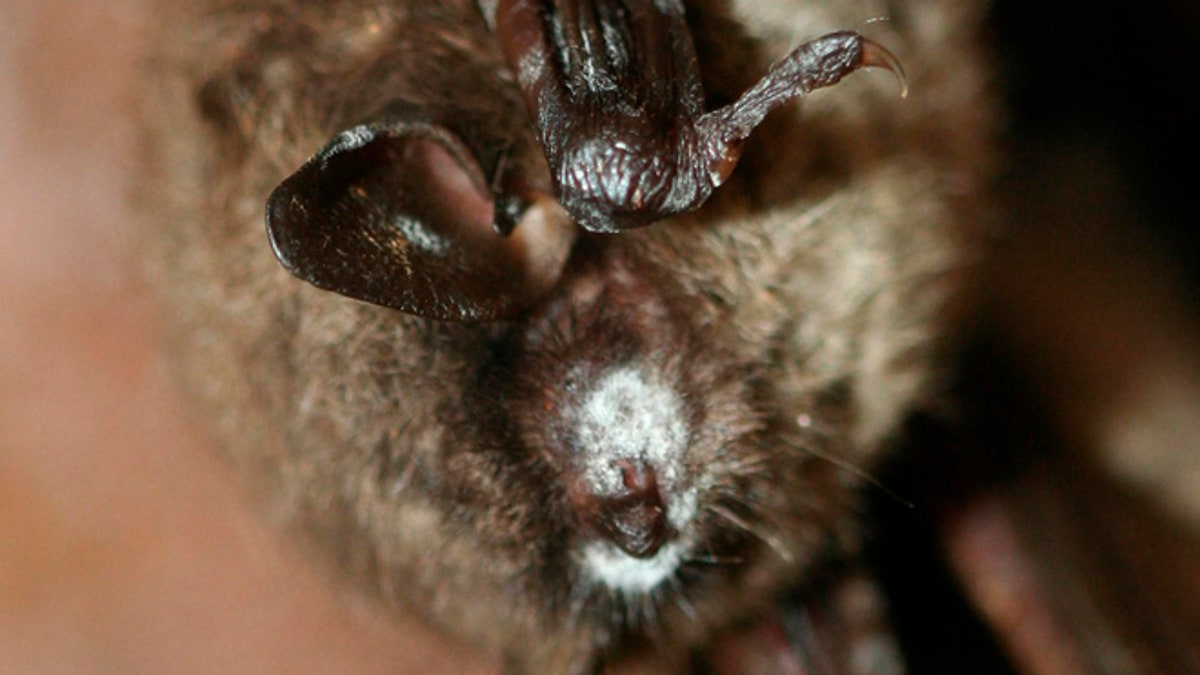
FILE: A hibernating brown bat with a white muzzle typical of white-nose syndrome is seen in this undated handout photograph. (Reuters)
MAMMOTH CAVE, Ky. – A sign posted at Mammoth Cave National Park in south-central Kentucky lets visitors know if they tour the largest known cave system in the world, they will have to walk on bio-security mats immediately afterward. Shoes must be scrubbed to help contain the spread of a disease that has killed more than 6 million cave-dwelling bats in the United States.
White-nose syndrome is on the move, and wildlife biologists are worried.
The disease that gets its name from a white fungus found on bats' muzzles, ears and wings was discovered in New York in 2006 and has spread to 25 states and five Canadian provinces.
In Tennessee and elsewhere, some caves are closed to the public.
Wildlife biologists say the threat is real, and no one knows how to stop the spread.
"Some of the bats, especially this species, (we) find some of them dead. But, we really expect a lot of the deaths to occur next year — next winter," said Rick Toomey, a scientist with the Resource Management Division at Mammoth Cave.
In Tennessee, the disease has spread fast.
"It's a reality that almost any cave we go into these days will have white-nose syndrome if it has a significant number of bats," said David Pelren, a biologist at the U.S. Fish and Wildlife Service. "There may be a few caves that don't have white-nose syndrome yet. But, it's becoming, Tennessee is becoming rather saturated with white-nose syndrome."
Recently, Katrina Morris and a team of biologists from the Georgia Natural Department of Resources searched for signs of the disease in a cave near Atlanta after it was discovered in a cave near the city — its farthest point south.
"Bats, sometimes, are considered things like the canary in the coal mine," said Morris, a biologist with the department. "We need to pay attention when they're having problems with things like this. They're a vulnerable, small animal that has relatively few young and are relatively long-lived for their size. So, they can show impact from some of these diseases and changes in the environment that can later impact us."
Morris and other biologists said the biggest impact of the disease — besides decimating entire colonies of bats in some caves — may be its impact on the agriculture industry.
Fewer pest-eating bats could cost farmers — and the economy — billions of dollars.
Scientists estimate a single bat can eat up to its entire body weight in insects in one night.
The U.S. Geological Survey says bats save the country's agriculture industry between $4 and $50 billion a year in pest control services.
"If I were in the agricultural industry or the forestry industry, I would certainly be staying up at night doing everything I can to work around this and deal with white-nose syndrome," said Cory Holliday, a cave and karst program director at The Nature Conservancy in Tennessee.
The disease is not believed to pose a health risk to humans, biologists said.
